#3d product visualization
Explore tagged Tumblr posts
Text
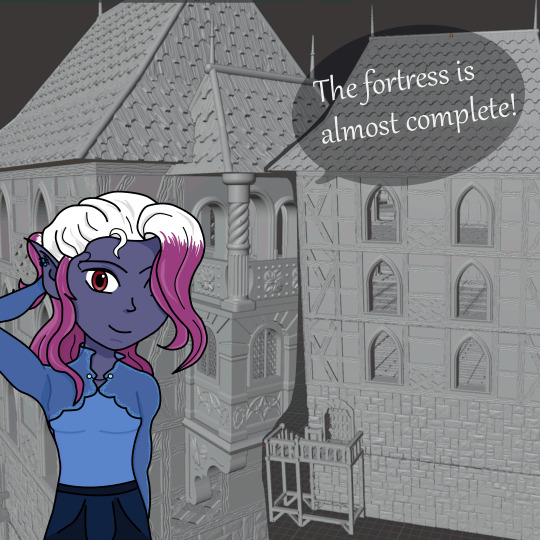
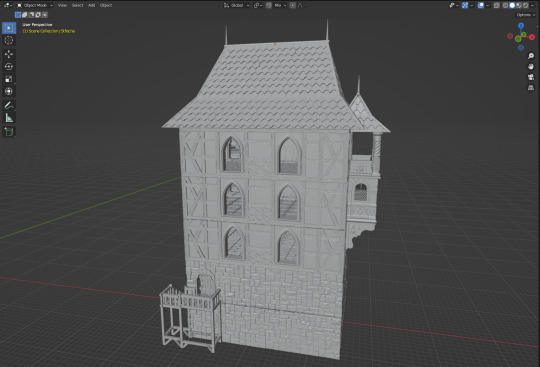
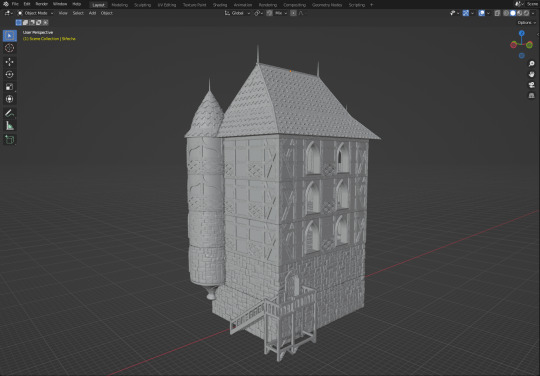


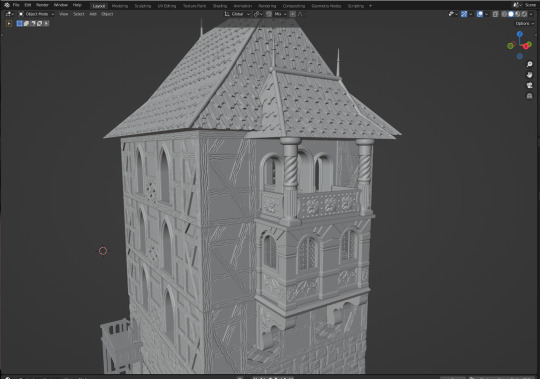
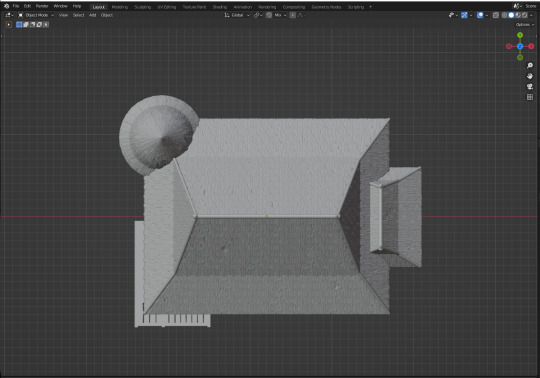
There are still a few technical adjustments left, but then you can look forward to our new final project!
Look at all the photos so you don't miss a single detail of the fortress. For interior lovers, check out my older posts!
#3d printer#3d printed#3d print#3d design#3d artist#3d model#blender#dnd5e#ttrpg#3d art#3d printing#rpg game#fantasy#dnd#3d product design#design build#design#3d project#3d product modeling#3d product visualization#3d render#3d modeling#tabletop roleplaying#tabletop#rpg#dungeons#roleplaying games#roleplaying#fantasy life#fantasy art
9 notes
·
View notes
Text
3 notes
·
View notes
Text
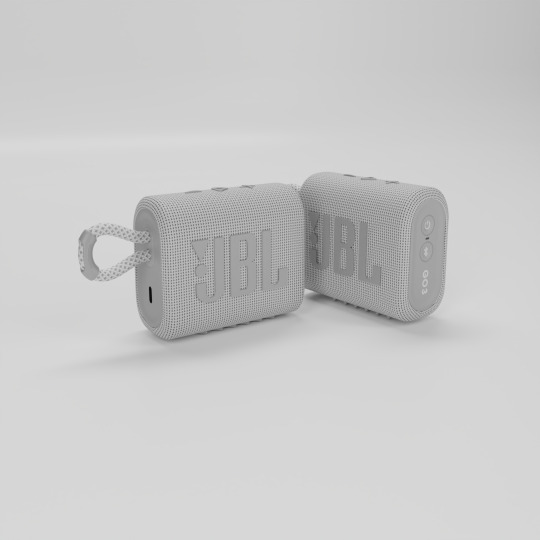
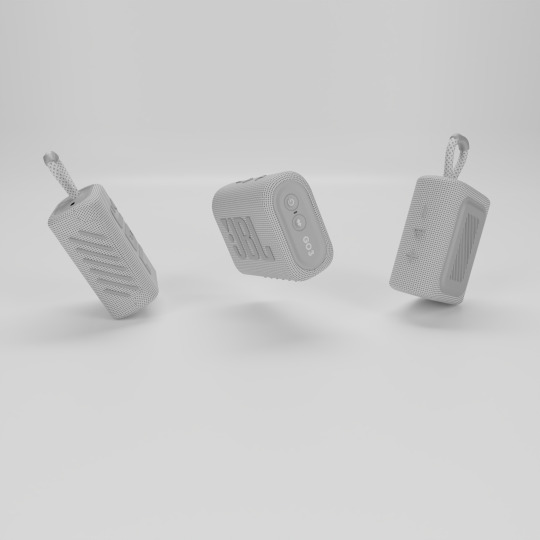
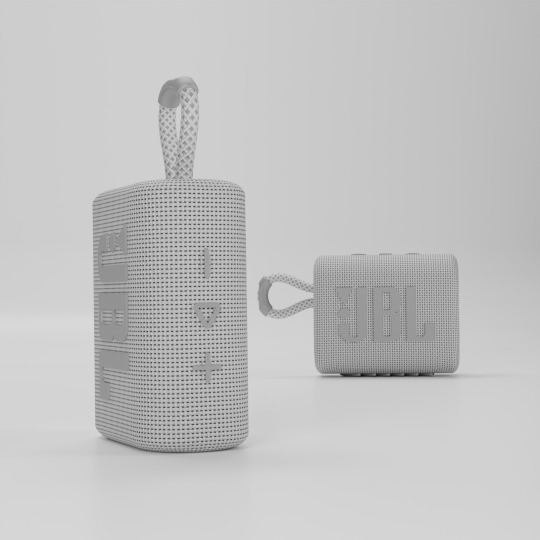

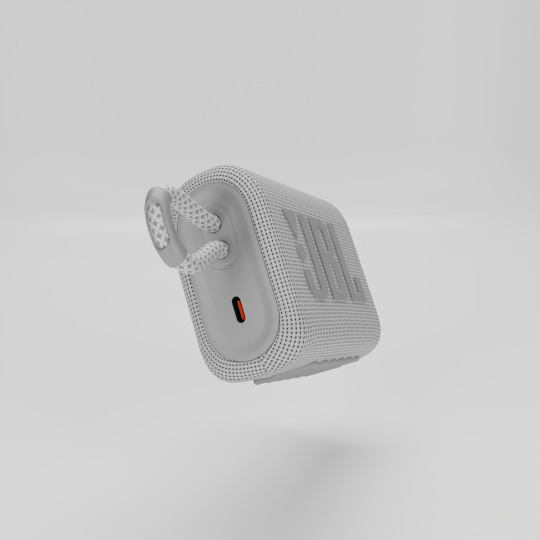

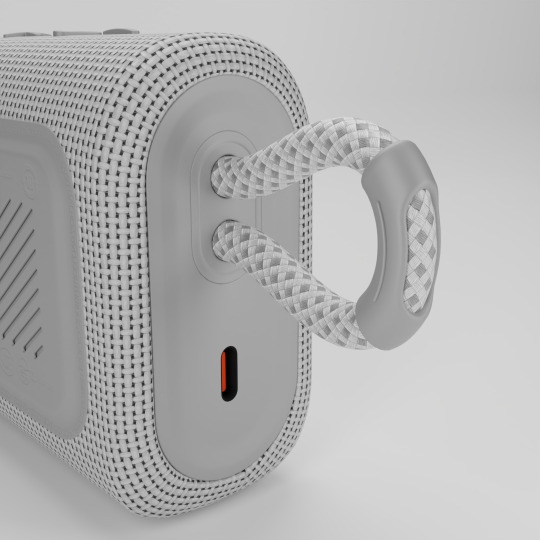
JBL Go 3
Minimalist Product Photography
#3d art#3d artwork#3d modeling#3d model#3d render#animation#artwork#b3d#blender#3drender#3d product modeling#3d product animation services#3d product visualization#3d product design#3d product rendering#3dvisualization#3dphotography#photography#photographer
2 notes
·
View notes
Text
How Furniture 3D Visualization Helps in Increasing Revenue in Business
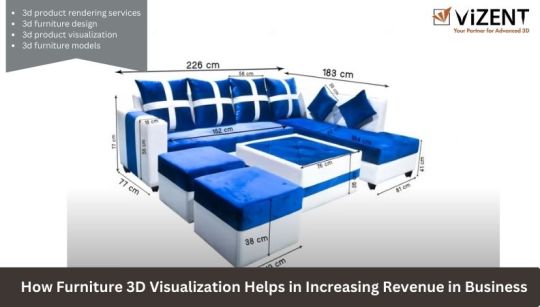
3D Furniture Visualization Helps in Increasing Revenue
The furniture industry has evolved significantly with digital transformation, and one of the most impactful innovations is 3D furniture visualization. With the rise of 3D product rendering services, businesses can showcase their furniture collections more effectively, attract more customers, and ultimately increase revenue.
Gone are the days when traditional catalog photography was the only way to market furniture. 3D furniture design and 3D product visualization have revolutionized the industry, offering businesses cost-effective, interactive, and highly engaging solutions. But how exactly does furniture 3D visualization contribute to revenue growth? Let's explore.
1. Enhancing Customer Engagement with Realistic Visuals
Customers are more likely to purchase furniture when they can visualize it in a realistic setting. 3D product rendering services provide high-quality, photorealistic images that help customers see every detail of a product before making a decision.
2. Offering Customization with 3D Furniture Models
Modern consumers prefer personalized experiences. With 3D furniture models, businesses can offer:
Custom color and material options
Different styles and configurations
Real-time modifications based on customer preferences
This level of customization increases customer satisfaction and boosts conversion rates.
3. Reducing Production and Marketing Costs
Traditional photography requires expensive setups, professional lighting, and multiple prototypes. With 3D product visualization, businesses can create lifelike images without physical production, reducing costs significantly.
4. Speeding Up Product Development
Furniture manufacturers and retailers can test multiple designs using 3D furniture design before committing to mass production. This accelerates product development, saving both time and money.
5. Enhancing Online Shopping Experience
E-commerce stores benefit immensely from 3D product rendering services. Customers can rotate, zoom, and explore 3D furniture models from different angles, creating a more immersive shopping experience.
6. Minimizing Product Returns
A major challenge in the furniture industry is high return rates due to unmet expectations. 3D product visualization allows customers to make informed decisions, reducing the chances of dissatisfaction and returns.
7. Enabling Augmented Reality (AR) Integration
With 3D product visualization, businesses can integrate Augmented Reality (AR) to let customers place virtual furniture in their space. This interactive feature builds confidence in purchases and increases sales.
8. Creating Eye-Catching Marketing Campaigns
Furniture brands using 3D furniture design for advertisements create more engaging and visually appealing content. High-quality 3D renders make online and offline marketing campaigns stand out.
9. Expanding Sales to a Global Market
With 3D product rendering services, businesses can showcase furniture designs globally without shipping physical samples, enabling them to reach international customers easily.
10. Strengthening B2B Partnerships
Wholesalers and distributors prefer working with manufacturers who provide detailed 3D furniture models, as it simplifies decision-making and enhances collaboration.
11. Showcasing Furniture in Multiple Environments
With 3D product visualization, businesses can display furniture in various settings—offices, homes, hotels—helping customers visualize how the piece will fit into their specific space.
12. Increasing Social Media Engagement
Visually appealing 3D renders receive more likes, shares, and comments on social media, boosting brand visibility and attracting potential buyers.
13. Providing Interactive 3D Catalogs
Instead of static brochures, businesses can offer interactive 3D catalogs, allowing customers to explore designs digitally before making a purchase.
14. Enhancing Trade Show and Exhibition Displays
At furniture expos and trade shows, companies using 3D furniture design can display their entire collection virtually, reducing logistics costs while still impressing attendees.
15. Future-Proofing the Business with 3D Technology
As the industry moves towards digital transformation, companies leveraging 3D product rendering services will stay ahead of competitors and ensure long-term growth.
Conclusion
Furniture 3D visualization is a game-changer for the industry, driving higher customer engagement, reducing costs, enhancing online experiences, and ultimately increasing revenue. Whether through 3D product rendering services, 3D furniture design, or interactive 3D furniture models, businesses can offer more compelling and personalized shopping experiences.
By adopting 3D product visualization, furniture brands can attract more customers, reduce returns, and sell products more efficiently, making it a must-have tool for modern furniture businesses.
FAQs
1. How does 3D product rendering help in furniture marketing? 3D product rendering services create high-quality, realistic images that enhance marketing campaigns and attract more customers.
2. Can 3D furniture design reduce product development costs? Yes! 3D furniture design allows businesses to test different designs before manufacturing, saving time and money.
3. How does 3D product visualization impact e-commerce sales? It provides interactive and detailed views of furniture, increasing customer confidence and conversion rates.
4. What are the benefits of 3D furniture models in customization? Customers can visualize different colors, materials, and styles in real-time, making their shopping experience more personalized.
5. Is 3D product visualization only for large businesses? No! Small and medium-sized businesses can also benefit from affordable 3D product rendering services, improving their sales and marketing strategies.
Read more.......
3D Furniture Modeling Enhances & Customization for Interior Designers
The Art and Science of Creating Photorealistic Architectural 3D Models
Why You Need Professional 3D Product Modeling Services for Your Brand Furniture 3D Visualization
How 3D Furniture Design Is Shaping the Future of Interior Decor 3D Furniture Design
How Can Furniture 3D Visualization Enhance Online Shopping?
Top 5 Trends Shaping the Future of Architectural 3D Visualization
How Architectural 3D Visualizations Improves Client Presentations? Architectural 3D Visualizations Enhance Client Presentations Presenting...
How Can 3D Rendering Help in Designing of 3D Furniture Visualization?
What are the Key Software and Tools Used in Architectural 3D Visualization?
What is Furniture 3D Visualization And how It Helps In Transforming Interior Design?
How the Future of Architectural 3D Visualization Transforms Design and Construction?
How 3D Product Rendering Services Are Changing the Industry?
What is the Power of Architectural Rendering Services in Modern Design?
Streamlining Manufacturing: How 3D Furniture Design Accelerates Prototyping
Architectural Rendering Companies as Sustainability Advocates A Green Approach to Visualization
How 3D Visualization of Architecture Transforming Contemporary Design
Beyond the Catalog Using 3D Product Visualization for Interactive Furniture Selection Using 3D Product Visualization for Interactive Furni...
The Competitive Edge How Architectural Rendering Services Boost Project Success
Design Without Limits The Flexibility of 3D Furniture Models for Modular Interiors
How 3D Product Rendering Services Enhance User Experience in Virtual Stores
Bridging the Gap Between Architects and Clients with 3D Architectural Visualization Services
Photorealistic 3D Furniture Models: The Key to Revolutionizing Online Retail
Interactive Experiences The Rise of Real-Time 3D Architectural Visualization Services
The Role of 3D Product Visualization in Reducing Time-to-Market for Furniture
Architectural 3D Modeling The Foundation of Stunning Visualizations
Why 3D Furniture Design Is the Ultimate Solution for Bespoke Home Decor
The Future of Real Estate Marketing the Role of 3D Architectural Visualization Services
From Idea to Icon how 3D Product Rendering Services Redefine Brand Identity
Beyond Blueprints How Architectural Rendering Companies Revolutionize Pre-Construction Planning
The Art and Science of Architectural 3D Modeling
Interactive Architecture Visualization: Engaging Clients with Real-Time 3D Models
The Importance of Lighting in 3D Furniture Rendering
Augmented Reality and 3D Furniture Visualization: The Perfect Match
Furniture Prototyping Made Easy with 3D Visualization
The Benefits of Furniture 3D Rendering for Custom Designs
The Benefits of Outsourcing to Architectural Rendering Companies
How 3D Product Visualization Brings Ideas to Life From Concept to Reality
How Can 3D Rendering Help in Designing of 3D Furniture Visualization?
0 notes
Text
3D Product Visualization Services | 3D Product Rendering
High-quality 3D product visualization services in Kolkata. Dimension-Rendering Specialized in 3D product rendering for manufacturers and production design agencies.
Website: https://www.dimension-rendering.com/productdesign
Address : Manjuri Garden, 2D, Block-5,Narendrapur, Kolkata- 700 103, West Bengal, India
Mobile: +91 9874 316975
0 notes
Text
The Complete Guide to 3D Product Visualization for Marketing and Sales

Grabbing and retaining customer attention is more challenging than ever. Traditional marketing methods, while effective, often struggle to meet the dynamic needs of digital consumers. Enter 3D product visualization—a powerful tool that bridges the gap between imagination and reality, revolutionizing how businesses present products to their audience.
Whether you're a business owner, marketer, or sales professional, understanding and leveraging this technology can give you a competitive edge. Here’s a comprehensive guide to help you explore the benefits, applications, and possibilities of 3D product visualization for marketing and sales.
What Is 3D Product Visualization?
3D product visualization is the process of creating high-quality, three-dimensional representations of a product. Unlike static images or videos, this method provides a detailed, interactive view of products, enabling customers to examine every angle, texture, and feature virtually.
Through 3D modeling services, companies can generate visuals that replicate the real-world appearance of their products or prototypes. These models can be used across various platforms, from websites and online stores to augmented reality (AR) applications.
Why Is 3D Product Visualization Important for Marketing and Sales?
In the modern sales funnel, customer engagement and confidence are critical. Here’s how 3D product visualization addresses these challenges:
Enhanced Customer Experience: Interactive 3D models let customers explore products as if they were holding them in their hands.
Higher Conversion Rates: Studies show that 3D product visualization can increase purchase intent by providing an accurate and immersive product view.
Cost-Effective Prototyping: Virtual representations eliminate the need for physical prototypes, reducing costs and speeding up design iterations.
Versatility: From AR experiences to e-commerce, 3D models can be adapted for various marketing and sales channels.
Applications of 3D Product Visualization in Marketing and Sales
1. E-Commerce and Online Stores
In the era of online shopping, customers want more than static product photos. Interactive 3D models allow users to zoom in, rotate, and view products from all angles. For example, furniture retailers use 3D product modeling services to let customers see how a sofa fits in their living room using augmented reality.
2. Augmented Reality Models
AR-powered experiences are becoming a game-changer for retail. Using AR apps, customers can project 3D product models into their physical spaces, bridging the gap between online and offline shopping. From trying on virtual sneakers to placing a virtual coffee table in their home, AR creates a compelling, personalized shopping experience.
3. Social Media and Digital Marketing
Interactive 3D content can boost engagement on social media platforms. Brands can showcase their products in a way that captivates audiences, encouraging them to interact, explore, and share. For example, a car manufacturer might use 3D visualization to allow potential buyers to customize their dream vehicle directly on Instagram or Facebook.
4. Virtual Showrooms and Trade Shows
Virtual showrooms have become a staple for businesses seeking to reach global audiences. Using 3D product visualization, companies can display their entire catalog in a virtual space, accessible 24/7. This approach is especially useful for trade shows or events, enabling potential clients to explore products remotely.
5. Customization and Personalization
Today’s consumers value personalized products. 3D product modeling services enable businesses to offer real-time customization options. For instance, a jewelry retailer could allow customers to design their ring by selecting materials, stones, and engraving styles, visualizing the result instantly.
How to Create Effective 3D Product Visualizations
1. Partner with Professional 3D Modeling Services
The quality of your visualization heavily depends on the expertise of your 3D artists. Collaborate with skilled professionals or agencies specializing in 3D product modeling services to ensure accurate and visually appealing results.
2. Use High-Quality Textures and Lighting
Textures and lighting play a critical role in making 3D models look realistic. For example, if you’re visualizing a leather bag, ensure the texture captures the fine grain of the material, while lighting highlights its sheen and stitching.
3. Optimize for Performance
Interactive 3D models should be optimized for smooth performance across devices, including smartphones, tablets, and desktop computers.
4. Incorporate Augmented Reality Models
To stay ahead in the market, integrate your 3D models into AR experiences. Many platforms, like Shopify and Adobe Aero, offer AR integration tools, enabling seamless deployment.
5. Test for User Engagement
Before launching, test your 3D models with a sample audience to gather feedback. Analyze how users interact with the models and refine the design accordingly.
Benefits of 3D Product Visualization for Your Business
Boosts Customer Confidence: Seeing a realistic representation of the product reduces hesitation and builds trust.
Speeds Up Decision-Making: Interactive models provide all the details customers need, helping them make faster purchasing decisions.
Reduces Returns: When customers know exactly what they’re buying, the likelihood of dissatisfaction and returns decreases.
Scales Across Industries: Whether you’re in fashion, furniture, or tech, 3D visualization is versatile and adaptable to any product.
Future Trends in 3D Product Visualization
The field of 3D modeling services is rapidly evolving. Here’s what’s on the horizon:
AI-Powered Design: Artificial intelligence is being integrated into 3D modeling, allowing for faster creation of complex designs.
Virtual Reality (VR): VR showrooms will take product exploration to the next level, offering fully immersive shopping experiences.
Hyper-Realistic Models: Advances in rendering technology will make 3D visualizations indistinguishable from real-life products.
Conclusion
3D product visualization is transforming the way businesses market and sell their products. By creating immersive, interactive experiences, companies can engage customers more effectively, reduce costs, and stand out in a crowded market.Whether you're looking to enhance your e-commerce platform, adopt augmented reality models, or showcase your products in a virtual showroom, investing in 3D product modeling services is a step toward innovation and success.
#3d modeling services#3d product visualization#augmented reality models#3d product modeling services
0 notes
Text
How 3D Modeling Services Are Impacting Product Design in 2024

3D modeling services have become essential tools for creating innovative and functional products. With advancements in technology and the integration of augmented reality (AR) and virtual reality (VR), 3D product modeling services have fundamentally transformed how companies design, visualize, and bring products to life. In 2024, the role of 3D modeling in product development is more significant than ever, reshaping industries with its capacity for enhanced visualization, streamlined processes, and precise design execution.
The Power of 3D Product Visualization
One of the most impactful aspects of 3D modeling services is their ability to provide 3D product visualization, allowing designers, clients, and stakeholders to see a highly accurate digital representation of the product before it is physically created. This powerful visualization tool helps bridge the gap between imagination and reality. Incorporating 3D product visualization into the design process is a game-changer, allowing businesses to showcase their ideas dynamically and engagingly that traditional 2D sketches cannot match.
Precision and Innovation in 3D Product Modeling Services
The precision offered by 3D modeling services is unmatched, allowing for intricate detailing and accurate representation of complex features. This level of precision is crucial in modern product design, where even the smallest details can significantly impact functionality and user experience.
Achieving Precision with 3D Modeling
Detailed Customization: 3D modeling software allows designers to create highly detailed and customized parts, tailored specifically to meet the needs of the product. This customization extends to textures, materials, and structural elements, providing a comprehensive view of the final product.
Integration with Emerging Technologies: The synergy between 3D modeling services and technologies like augmented reality models and 3D printing has opened new possibilities in design and prototyping. AR models allow for a realistic overlay of the product in a real-world setting, enabling designers to evaluate how the product interacts with its environment before production.
With the integration of augmented reality models, designers can test the product's usability in a virtual space, ensuring it meets both design and user expectations.
The Synergy Between 3D Modeling and Emerging Technologies
As technology advances, 3D product modeling services are increasingly paired with innovations like 3D printing and AR/VR, further enhancing the design and development process.
3D Printing and Rapid Prototyping
The combination of 3D modeling services and 3D printing has revolutionized prototyping. Digital models can be directly converted into physical prototypes, allowing for rapid testing and iterative refinements. This capability:
Speeds Up Prototyping: Creating a physical prototype from a digital model is faster and more efficient, enabling quick testing of design concepts.
Enables Complex Designs: 3D printing can handle intricate geometries that traditional manufacturing might find challenging, allowing designers to push the boundaries of what’s possible.
Augmented Reality (AR) Models
The use of augmented reality models is becoming more widespread in product design. AR technology allows designers and clients to view the 3D model of a product in its intended environment using smartphones or AR glasses.
Real-World Visualization: AR models overlay the digital product onto the real world, giving a realistic preview of how it will look and fit in actual spaces.
Enhanced User Interaction: By using AR, clients can interact with the product before it’s manufactured, providing valuable feedback on design and usability.
This integration of AR and 3D product modeling services not only improves design accuracy but also offers an interactive and engaging experience for clients.
Overcoming Challenges in 3D Modeling Services
While the benefits of 3D modeling services are immense, there are challenges, such as the need for skilled professionals, high software costs, and significant computing power. However, investing in training and advanced tools can help businesses fully harness the potential of 3D modeling, paving the way for more innovative and efficient product design.
Conclusion
In 2024, 3D modeling services are more than just a design tool; they are a vital component of modern product development, driving innovation and efficiency. By adopting these services, companies can leverage enhanced 3D product visualization, streamlined design processes, and precise augmented reality models to create products that meet the highest standards of quality and functionality. As technology continues to evolve, the future of product design looks promising, with 3D product modeling services at the forefront of this exciting transformation.
0 notes
Text
Explore the top trends in product visualization for ecommerce, including the rise of 3D product visualization, jewellery visualisation services, and emerging technologies like AR and VR. Enhance customer engagement and drive sales with effective visualization techniques.
#product visualization for ecommerce#3d product visualization#3d product visualization services#jewelry visualization services#3d jewelry visualization
0 notes
Text

FLOOR LAMP
Computer-Generated Imagery is increasingly used in product marketing to create highly realistic visual representations of products. It allows marketers to showcase items in perfect lighting, environments, and angles that may be challenging or expensive to capture with traditional photography. CGI also provides flexibility for rapid design iterations, product customization, and immersive 3D visualizations, helping brands engage customers more effectively and bring their product concepts to life before physical production.
#cgi#3dvisualization#3d#3d modeling#furniture rendering#furniture cgi#3d furniture rendering services#3d furniture rendering#furniture rendering services#cgi furniture#furniture 3d rendering#3d rendering furniture#rendering furniture#3d furniture modeling services#virtual furnishing#3d product rendering services#3d product visualization services#3d product rendering#product rendering#3d product rendering company#3d product visualization#photorealistic 3d furniture#product cgi#3d product visualisation#3d modeling rendering#3d modelling service#virtual furniture
0 notes
Text
How 3D Product Rendering Enhances Customer Experience

In the ever-evolving landscape of digital marketing, businesses are continuously seeking innovative ways to engage customers and enhance their overall experience. One such groundbreaking technique that has gained immense popularity is 3D product rendering. This technology transforms static images into dynamic, interactive visual experiences, offering customers a more realistic and immersive view of products.
In this article, we will explore how 3D product rendering enhances customer experience and why it has become a vital tool for modern marketers.
1. Realistic Visualization
One of the most significant advantages of 3D product rendering is its ability to provide customers with realistic and detailed visualizations of products. Unlike traditional 2D images, 3D renders allow customers to view products from multiple angles, zoom in for close-up details, and even see how the product looks in different environments. This level of realism helps customers make more informed purchasing decisions by giving them a comprehensive understanding of the product’s features and aesthetics.
2. Interactive Experience
3D product rendering goes beyond static visuals by offering an interactive experience. Customers can interact with the product, rotate it, change colors, and explore various configurations. This interactivity not only engages customers but also allows them to personalize the product according to their preferences.
For example, in the automotive industry, customers can customize car models by selecting different paint colors, interior options, and accessories, creating a tailored experience that aligns with their desires.
3. Enhanced Product Information
Traditional product images often fall short in conveying complex details and functionalities. 3D product rendering, on the other hand, enables businesses to showcase intricate product details and explain functionalities more effectively. This is particularly beneficial for industries such as electronics, furniture, and machinery, where understanding the product’s features is crucial for customers.
By providing a comprehensive visual representation, 3D renders bridge the gap between product information and customer understanding.
4. Improved Customer Confidence
One of the primary reasons customers hesitate to make online purchases is the inability to physically interact with the product. 3D product rendering addresses this concern by offering a lifelike representation that closely mimics an in-store experience.
When customers can see the product in detail and interact with it virtually, their confidence in the purchase increases significantly. This leads to higher conversion rates and reduced return rates, as customers are more likely to be satisfied with their purchase.
5. Cost-Effective and Time-Saving
For businesses, creating physical prototypes for every product variation can be time-consuming and expensive. 3D product rendering eliminates the need for physical prototypes by allowing businesses to create digital models that can be easily modified and updated.
This not only reduces production costs but also accelerates the product development process. Moreover, 3D renders can be used across various marketing channels, from websites and social media to virtual reality (VR) and augmented reality (AR) applications, providing a consistent and versatile visual asset.
6. Personalized Marketing
3D product rendering enables businesses to deliver personalized marketing experiences to their customers. By leveraging data on customer preferences and behaviors, businesses can create customized 3D visuals that cater to individual tastes.
For instance, a furniture retailer can use 3D rendering to show customers how a particular sofa would look in their living room, taking into account the room’s dimensions, color scheme, and existing decor.
This level of personalization fosters a deeper connection with customers and enhances their overall experience.
7. Future-Proof Technology
As technology continues to advance, 3D product rendering is poised to become even more sophisticated and accessible. With the rise of AR and VR, customers will be able to interact with products in entirely new ways, further blurring the line between online and offline shopping experiences.
Businesses that invest in 3D rendering technology today will be well-positioned to leverage these advancements and stay ahead of the competition.
Conclusion
In conclusion, 3D product rendering is revolutionizing the way businesses present their products and engage with customers. By offering realistic visualization, interactive experiences, enhanced product information, and personalized marketing, 3D rendering significantly enhances customer experience and drives higher engagement and conversion rates.
As technology continues to evolve, businesses that embrace 3D product rendering will be better equipped to meet the ever-changing demands of modern consumers and deliver exceptional online shopping experiences.
#3D Product Rendering#3D Product Rendering Services#3d product visualization#3d product rendering company in usa
0 notes
Text
Understanding the ROI of Investing in 3D Product Modeling Services

In the dynamic landscape of product development and marketing, businesses are continually seeking innovative ways to enhance their offerings and engage their target audience. One such transformative tool gaining significant traction is 3D product modeling services. In this blog, we delve into the concept of Return on Investment (ROI) when investing in 3D product modeling services and explore the substantial benefits it offers to businesses.
The Evolution of Product Presentation
Traditionally, product presentation relied heavily on photography and physical prototypes. While these methods served their purpose, they often fell short in fully capturing a product’s essence and failed to provide the interactive experience modern consumers crave. Enter 3D product modeling—a game-changer that revolutionizes how products are showcased and marketed.
What Are 3D Product Modeling Services?
3D product modeling involves creating virtual representations of products using specialized software. This process results in highly realistic and detailed digital models that can be viewed and manipulated from various angles. These models can then be integrated into a range of applications, from e-commerce platforms and advertisements to virtual reality environments.
Key Benefits of 3D Product Modeling
1. Enhanced Visual Appeal:
3D models provide a level of detail and realism that traditional photography cannot match. This enhanced visual appeal helps captivate customers and communicates product features more effectively.
2. Increased Engagement and Interactivity:
Interactive 3D models allow customers to explore products in a hands-on manner, leading to increased engagement and a deeper understanding of product functionalities.
3. Cost and Time Savings:
Compared to traditional prototyping and photography, 3D modeling can significantly reduce costs and time associated with product development and marketing campaigns.
4. Versatility and Adaptability:
3D models can be repurposed across various marketing channels, including websites, social media, and mobile apps, ensuring consistent branding and messaging.
Calculating ROI on 3D Product Modeling
Determining the ROI of 3D product modeling involves analyzing both quantitative and qualitative factors:
1. Cost Savings:
Evaluate cost reductions in photography, physical prototyping, and marketing collateral production.
2. Increased Sales and Conversions:
Measure improvements in conversion rates resulting from enhanced product visualization.
3. Brand Perception and Customer Satisfaction:
Consider qualitative metrics like brand perception and customer satisfaction resulting from improved product representation.
Case Studies and Real-World Examples
To better understand the tangible benefits of investing in 3D product modeling, let's explore some case studies from industries such as fashion, automotive, and furniture. These examples highlight how leading brands have leveraged 3D modeling to drive sales, streamline operations, and gain a competitive edge.
Conclusion
In summary, the ROI of investing in 3D product modeling services extends far beyond upfront costs. By harnessing the power of interactive and immersive product visualization, businesses can unlock new opportunities for growth, customer engagement, and operational efficiency. As consumer preferences continue to evolve, embracing innovative technologies like 3D modeling is no longer just an option—it's a strategic imperative for staying ahead in today's competitive marketplace. Embrace the future of product presentation and elevate your brand with 3D product modeling services.
0 notes
Text
The Impact of 3D Product Rendering on E-Commerce Sales: Exploring Costs and Services
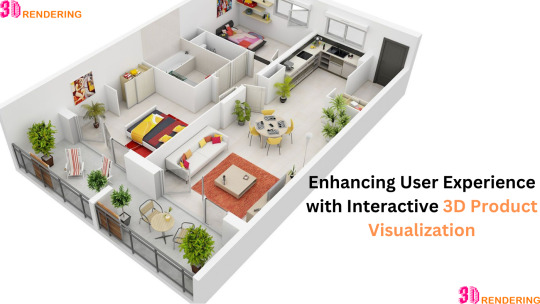
In the realm of e-commerce, where visual appeal reigns supreme, the utilization of 3D product rendering has become increasingly prevalent. This article delves into the profound impact of 3D product rendering on e-commerce sales, exploring its benefits, challenges, and the associated costs. We'll also navigate through the realm of 3D rendering services, including the best options and their availability.
The Power of Visuals in E-Commerce
Visual content plays a pivotal role in captivating online shoppers, aiding them in making informed purchasing decisions. Traditional product photography, while effective, often falls short in providing the level of customization and interactivity that consumers crave.
Understanding 3D Product Rendering
Enter 3D product rendering - a technology that transcends the limitations of conventional photography by offering immersive and customizable product experiences. Unlike static images, 3D renders enable users to interact with products from various angles, zoom in on intricate details, and even customize aspects like color, texture, and size.
Enhancing the Shopping Experience
This heightened level of engagement translates into a superior shopping experience for consumers. By providing them with the ability to explore products in greater detail, businesses can effectively reduce bounce rates and increase the likelihood of conversion.
Building Trust and Confidence
One of the most significant advantages of 3D product rendering is its ability to build trust and confidence among consumers. High-quality renders convey professionalism and attention to detail, instilling confidence in the perceived quality of the product. This is particularly important in industries where visual presentation directly influences purchasing decisions.
Driving Conversions and Sales
Numerous studies have shown that interactive product visualization, facilitated by 3D rendering, significantly impacts purchase decisions and conversion rates. By allowing consumers to virtually "try before they buy," businesses can overcome common barriers to online purchasing, such as uncertainty about product appearance or fit.
Overcoming Challenges and Implementation
While the benefits of 3D product rendering are undeniable, businesses may encounter challenges in its implementation. These include the initial investment required for software and training, as well as the technical complexities associated with creating high-quality renders. However, with the right resources and expertise, these challenges can be effectively overcome.
Future Trends and Opportunities
Looking ahead, the future of 3D product rendering holds immense promise. Advancements in technology, such as augmented reality (AR) and virtual reality (VR), are poised to revolutionize the e-commerce landscape even further. By seamlessly integrating these technologies into the online shopping experience, businesses can offer unprecedented levels of immersion and personalization.
Cost Considerations and Service Providers
One of the most common questions surrounding 3D product rendering is, "How much does it cost?" The answer varies depending on factors such as the complexity of the project, the level of detail required, and the expertise of the service provider. On average, prices can range from a few hundred to several thousand dollars per render.
As for the question of who provides these services, a quick search for "best 3D product rendering services" yields a plethora of options. From freelance designers to specialized agencies, there is no shortage of talent available to fulfill your rendering needs. Additionally, many service providers offer remote collaboration, making location less of a limiting factor. Simply searching for "3D product rendering services near me" can yield local options, but don't hesitate to explore online providers as well.
Conclusion
In conclusion, the impact of 3D product rendering on e-commerce sales cannot be overstated. From enhancing the shopping experience to driving conversions and sales, this technology offers myriad benefits for businesses and consumers alike. While challenges may exist, the rewards far outweigh the investment. By embracing 3D rendering and partnering with the right service providers, businesses can stay ahead of the curve and deliver exceptional experiences that resonate with today's discerning shoppers.
0 notes
Text
How 3D Product Rendering Services are Revolutionizing Furniture Design and Marketing?

Revolutionizing of Furniture Design and Marketing
The furniture industry has significantly evolved with the introduction of 3D product rendering services. Instead of relying on traditional photography and hand-drawn sketches, manufacturers and retailers now use 3D furniture design to create stunning, photorealistic visuals of their products.
This transformation has been driven by the need for better marketing tools, interactive shopping experiences, and cost-efficient product development. With 3D product visualization, businesses can showcase 3D furniture models before production, reducing waste and improving customer satisfaction.
In this article, we will explore how 3D product rendering services are shaping the future of furniture design and how businesses can leverage this technology for better sales and customer engagement.
What Are 3D Product Rendering Services?
3D product rendering services involve the creation of high-quality, digital representations of products using advanced rendering software. These renderings help businesses visualize products before they are physically produced.
How Do 3D Product Rendering Services Work?
3D Modeling:
esigners create a 3D furniture model based on technical drawings or sketches.
Texturing & Lighting:
Realistic materials and lighting effects are applied to enhance the visual appeal.
Rendering & Post-Processing:
The final image is processed to achieve a photorealistic finish.
Why 3D Furniture Design is Essential for Modern Businesses
1. Cost-Effective Product Development
Using 3D furniture design, manufacturers can create virtual prototypes, reducing the need for physical samples. This minimizes material waste and speeds up production cycles.
2. Enhanced Customization Options
Customers can personalize 3D furniture models by changing colors, fabrics, and dimensions in real time, providing a better shopping experience.
3. Better Marketing and Sales
High-quality 3D product visualization is used in advertisements, websites, and catalogs to attract customers with stunning visuals.
The Role of 3D Product Visualization in E-Commerce
1. Interactive Shopping Experiences
With 3D product visualization, customers can rotate, zoom, and view products from different angles, improving their confidence in purchasing decisions.
2. Reducing Product Returns
When customers can see a realistic representation of furniture online, they make more informed choices, leading to fewer returns.
3. Faster Approval Process
Furniture designers can showcase 3D furniture models to clients, making approvals quicker and reducing revisions.
How 3D Furniture Models Benefit Interior Designers and Manufacturers
1. Virtual Showrooms
Furniture brands use 3D product rendering services to create online showrooms, allowing customers to browse furniture collections without visiting a physical store.
2. Seamless Augmented Reality (AR) Integration
With AR, shoppers can place 3D furniture models in their homes using smartphones, ensuring the perfect fit before purchasing.
3. Competitive Advantage in a Digital Market
Companies using 3D furniture design stand out from competitors by offering interactive and immersive experiences.
Industries Benefiting from 3D Product Rendering Services
1. Furniture and Home Decor
Retailers use 3D product visualization to display furniture pieces in various settings without the need for expensive photoshoots.
2. E-Commerce and Online Marketplaces
Websites that sell furniture leverage 3D furniture models to enhance product listings and improve customer engagement.
3. Architectural and Interior Design Firms
Designers incorporate 3D furniture design into their projects to create realistic renderings of interiors for clients.
Future Trends in 3D Product Rendering Services
1. AI-Powered 3D Rendering
Artificial intelligence is making 3D product rendering services more efficient by automating tasks such as material selection and lighting adjustments.
2. Virtual Reality (VR) Shopping
Retailers are integrating 3D furniture models into VR platforms, allowing customers to walk through virtual stores and interact with products.
3. Sustainable Product Development
By using 3D furniture design, brands can test multiple product variations digitally before production, reducing environmental impact.
Conclusion
The rise of 3D product rendering services has transformed how furniture is designed, marketed, and sold. With 3D furniture design, businesses can create lifelike visualizations that attract buyers and enhance online shopping experiences. 3D product visualization has also helped brands reduce costs, speed up development, and offer better customization options.
As technology advances, 3D furniture models will continue to play a crucial role in shaping the future of the furniture industry. Companies that adopt these innovations will stay ahead in an increasingly digital marketplace.
FAQs
1. What software is used for 3D furniture design? Popular software includes Blender, 3ds Max, SketchUp, and Autodesk Maya for creating 3D furniture models.
2. How do 3D product rendering services benefit furniture businesses? They provide cost-effective product visualization, better marketing materials, and improved customer engagement.
3. Can customers customize furniture using 3D product visualization? Yes, many companies offer real-time customization features where customers can change colors, materials, and sizes of 3D furniture models.
4. Is 3D furniture design expensive? While initial setup costs exist, it is more cost-effective in the long run compared to traditional photography and physical prototyping.
5. How can businesses integrate 3D product rendering services into their websites? They can use WebGL, AR tools, or 3D configurators that allow customers to interact with 3D furniture models online.
read more.....
Read more.......
3D Furniture Modeling Enhances & Customization for Interior Designers
The Art and Science of Creating Photorealistic Architectural 3D Models
Why You Need Professional 3D Product Modeling Services for Your Brand Furniture 3D Visualization
How 3D Furniture Design Is Shaping the Future of Interior Decor 3D Furniture Design
How Can Furniture 3D Visualization Enhance Online Shopping?
Top 5 Trends Shaping the Future of Architectural 3D Visualization
How Architectural 3D Visualizations Improves Client Presentations? Architectural 3D Visualizations Enhance Client Presentations Presenting...
How Can 3D Rendering Help in Designing of 3D Furniture Visualization?
What are the Key Software and Tools Used in Architectural 3D Visualization?
What is Furniture 3D Visualization And how It Helps In Transforming Interior Design?
How the Future of Architectural 3D Visualization Transforms Design and Construction?
How 3D Product Rendering Services Are Changing the Industry?
What is the Power of Architectural Rendering Services in Modern Design?
Streamlining Manufacturing: How 3D Furniture Design Accelerates Prototyping
Architectural Rendering Companies as Sustainability Advocates A Green Approach to Visualization
How 3D Visualization of Architecture Transforming Contemporary Design
Beyond the Catalog Using 3D Product Visualization for Interactive Furniture Selection Using 3D Product Visualization for Interactive Furni...
The Competitive Edge How Architectural Rendering Services Boost Project Success
Design Without Limits The Flexibility of 3D Furniture Models for Modular Interiors
How 3D Product Rendering Services Enhance User Experience in Virtual Stores
Bridging the Gap Between Architects and Clients with 3D Architectural Visualization Services
Photorealistic 3D Furniture Models: The Key to Revolutionizing Online Retail
Interactive Experiences The Rise of Real-Time 3D Architectural Visualization Services
The Role of 3D Product Visualization in Reducing Time-to-Market for Furniture
Architectural 3D Modeling The Foundation of Stunning Visualizations
Why 3D Furniture Design Is the Ultimate Solution for Bespoke Home Decor
The Future of Real Estate Marketing the Role of 3D Architectural Visualization Services
From Idea to Icon how 3D Product Rendering Services Redefine Brand Identity
Beyond Blueprints How Architectural Rendering Companies Revolutionize Pre-Construction Planning
The Art and Science of Architectural 3D Modeling
Interactive Architecture Visualization: Engaging Clients with Real-Time 3D Models
The Importance of Lighting in 3D Furniture Rendering
Augmented Reality and 3D Furniture Visualization: The Perfect Match
Furniture Prototyping Made Easy with 3D Visualization
The Benefits of Furniture 3D Rendering for Custom Designs
The Benefits of Outsourcing to Architectural Rendering Companies
How 3D Product Visualization Brings Ideas to Life From Concept to Reality
How Can 3D Rendering Help in Designing of 3D Furniture Visualization?
0 notes
Text
Unlocking Possibilities: Innovative Product 3D Rendering for Success
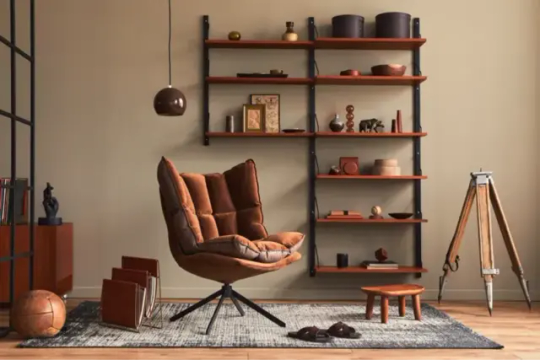
🌟 Elevate Your Product's Presence with Cutting-Edge 3D Visualization 🌟 Transform your product into a visual masterpiece with the leading 3D Product Rendering Company in the USA! At we specialize in delivering unparalleled 3D product visualization services that breathe life into your concepts, captivating your audience and leaving a lasting impression.
0 notes
Text
#AR#VR#Augmented Reality#3d product modeling#3d product visualization#3d product design#Engineering Visualization#Mechanical Engineering#Architectural Visualization#Automotive Engineering#Engineering Trends#Visualization Technologies#Design Optimization
1 note
·
View note
Text
Revolutionizing Product Presentation: Avataar's Mastery in 3D Product Animation
Unlock the future of immersive product experiences with Avataar. Explore our expertise in 3D product animation, seamlessly blending creativity and technology to elevate your brand's visual storytelling. Dive into a world where every product comes to life, captivating your audience like never before.
#3d#ar#ai#3d product animation services#3d product modeling#3d product visualization#3d product design#3d product rendering#augmented reality
0 notes